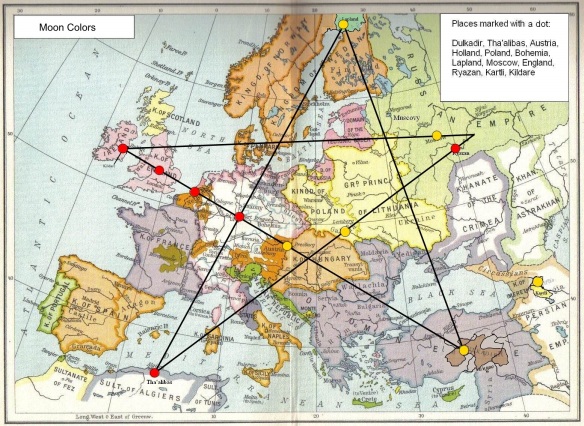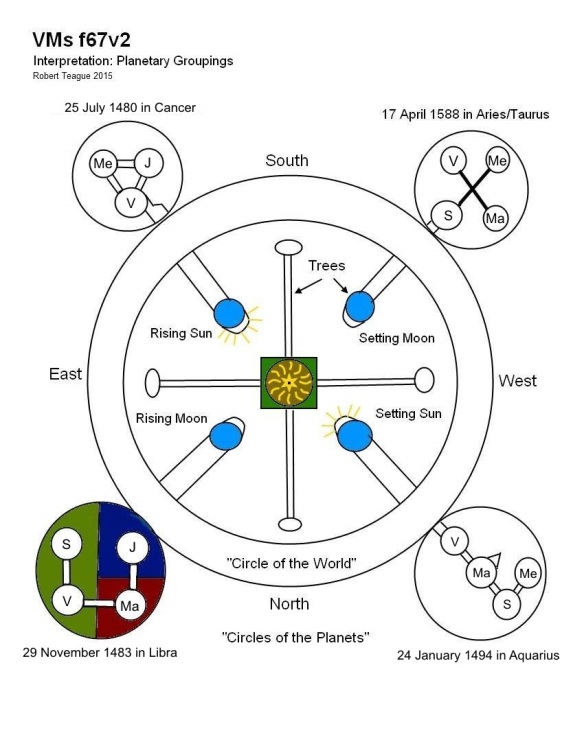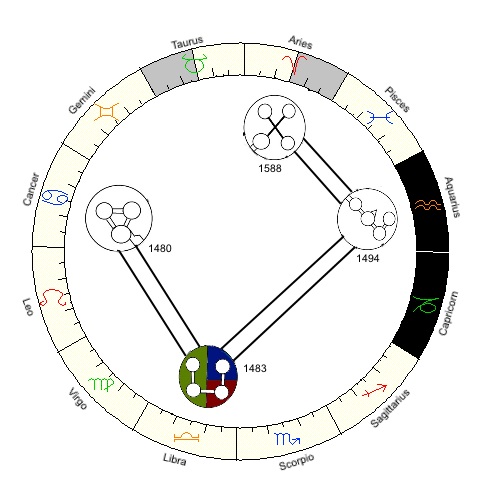I’ve finally done something that should have been obvious, but I just didn’t think of it– on the map of Europe with the pentagram I have added the color of the moon over the place name.
This clearly indicates the drawing path for the pentagram, and indicates it is for “active spirit banishing”, whatever that might mean.
The clear pattern also supports my decoding of the labels for the place names.

For more on the map, see “Folio f67r2”, above.






